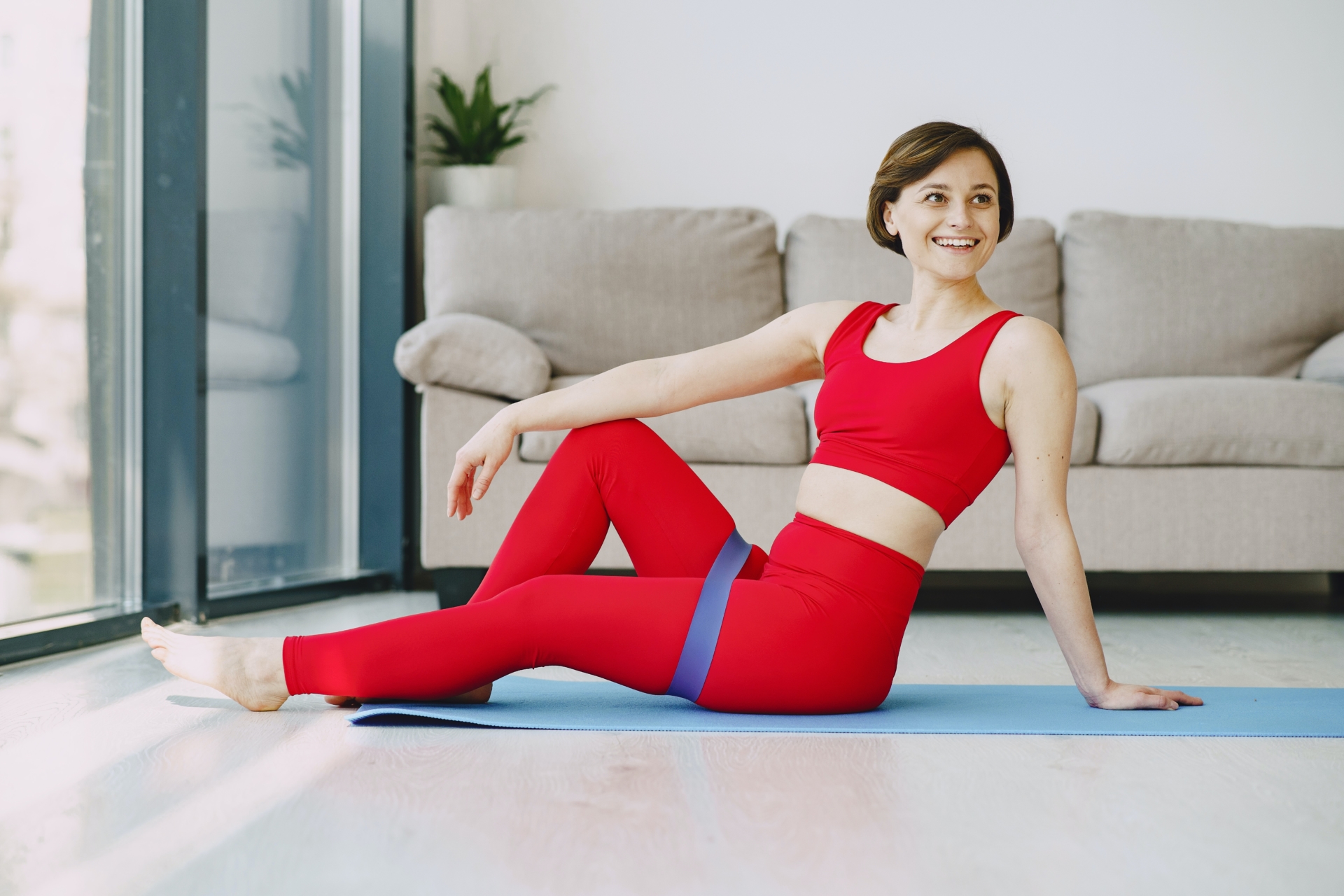Resistance training for strengthening the body with the use of an elastic band induces numerous beneficial effects on the body and is advised for everyone as it can help an individual with musculoskeletal problems. Workouts in resistance-training with the use of elastic band can be graded as single- or multiple-joint exercises. It is an exercise that usually has a more significant effect than single-joint exercises because they enhance different muscle groups, raises the overall muscle strength with lesser workouts, and more likely represent daily activities.
It is hard to look at and believe that a small elastic band is a perfect source for strength training compared to a large dumbbell. They may be tiny and seem irrelevant, but the effect of using it will surely help strengthen your body.
With the use of just one band, it could already be used to strengthen all major muscle groups, and after using it, you will feel it, particularly the people who use it for the first time.
Elastic bands emerged in the early 1900s and had been made out of surgical tubing. It was primarily intended to be used for muscle rehabilitation. In the 1990s, the use of elastic bands made a comeback on the fitness community and continued to rise in popularity up until now.
Reasons for using an Elastic Band for Exercising:
Versatile
While dumbbells can give you with a heavy lift, and weight machines are durable and easy to use – both of these equipment does not have the versatility that an elastic band has. With it, you could perform a band squat and add a bicep curl without the need of other equipment. You could also do lunges using and elastic band plus an overhead press. The options are infinite.
Additional muscle recruitment
Because of the elastic bands’ great versatility, it is also more effective. A dumbbell-shaped bicep curl is a static motion, and the muscles that are being used are predictable. But with the use of a band, all the muscle fibers in the arms and shoulders will work together to make it more stable.
Cost-efficient
Most of the elastic bands for exercising retails under $20; it is relatively cheap (even the high-quality ones). Users could purchase various bands for different rates of intensity without still having to pay a lot of money for it.
Portable and convenient to use
It could be challenging to put a treadmill away when a visitor unexpectedly comes. It can also become cumbersome to move the dumbbells beneath the bed. But with elastic bands, tucking it away is never an issue. They could be tucked away just about anywhere because it is small, lightweight and flexible. It can easily fit in a gym bag, or even with a handbag.
Types of Resistance Elastic Bands for Exercising
Resistance elastic band comes in different forms. We have the Traditional Band, Braided Tubes, Flat Band, and the Superband.
Traditional Band
This is a long cylindrical tube that has plastic handles that are attached to its ends. Traditional bands have different thicknesses, too. This would determine the level of difficulty of the band to use. This is the appropriate resistance elastic band to use for basic strength exercises.
Braided Tubes
This has four tube strands that are tightly braided together. Just like that of traditional bands, they also come in different level of resistance. This type of band, because of its braided feature, adds to the durability and can hold up even with rigorous workouts.
Flat Band
This is the ideal band that is used for physical therapy and mind-body exercises. This is also fit to be used by seniors.
Superband
This is quite popular in the CrossFit world. It is excellent for partner exercises and pull-up assistance. This is also the most common type of resistance elastic band used by athletes.
Sample Exercises Using a Resistance Elastic Band
Bicep Curl
Stand with both feet stepping on the band.
Hold each end and extend your arms with palms facing forward.
Curl your hands up slowly toward the shoulders. Make sure it squeezes the biceps. Keep the elbows at the sides of the body all the time.
Lower your hands slowly back to the starting position.
Bent-Over Row
Stand with both feet stepping on the band. Make sure that your feet are a hip-width apart.
Hold one end with each hand. Make sure that the palms are facing toward each other.
Bend knees slight and lean hips slightly forward.
Keep the back straight, arms straight and hands should be under the shoulder.
Bend your elbow so as to pull the band toward the chest. Keep the elbows close to the body.
Straighten the arms and lower hands to go back to the starting position.
Glute Kick-Back
Put hand and knees on the floor. Loop the band around the left ankle and the other side of the band on the arch of the right foot.
Lift up the right leg and extend it straight behind you. It should be pushing against the band’s resistance. Make sure to straighten the leg as much as you can.
Bring the right leg back slowly to the starting position.
*Repeat with the other side: band around the right ankle and the arch of the left foot.
Glute Bridge
Lie on the back, hand at the side, knees bent, and feet should be flat on the floor (it must be hip-width apart). Loop a resistance elastic band around the thighs, just above the knees.
Squeeze glutes and the abdomen area. Lift hips up a few inches from the floor until the body forms a straight line from the shoulders to the knees. Hold the position for a few seconds. Make sure to maintain some tension in the band so that the knees would not collapse in.
Slowly lower hips to the floor to go back to the starting position.
Lateral Walk
Loop the resistance elastic band around the ankle and make a quarter-squat position.
Take a big step to the right with the right foot, and then followed with the left foot. Take as many steps as the space will allow in this direction.
Go back to the starting position by going the reverse direction. Start each step with the left foot and then the right foot.




